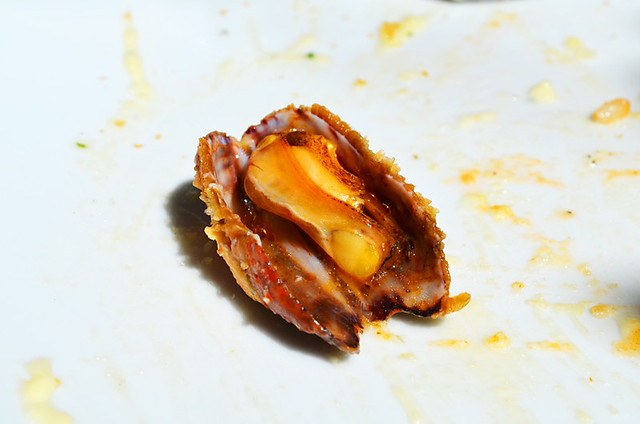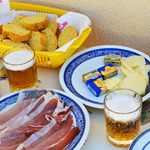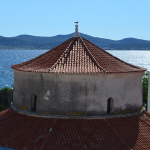The seafood risotto was so good it had just raised the bar of expectation regarding the cuisine in Croatia so high that a basketball player could have limbo danced under it without a problem.
The risotto was creamy; full of flavour and the essence of the Adriatic thanks in part to an all star cast of huge langoustines, mussels and squid. It was the perfect risotto apart from the presence of two chunky, greenish stones.
At least they looked like stones. If they were shellfish, then they were most certainly off as they were clamped shut so tightly there was no discernible opening.
The general rule of thumb is that if a shellfish is clamped shut, you don’t touch it.
When Andy mentioned this to the waiter at Lungo Mare in Zadar, his eyes lit up.
“Ah, this is kunjka,” he laughed. “Look.”
And with that he proceeded to reveal to us the secrets of a stony looking mollusc that must often get discarded on the side of plates of the uninitiated.
He picked up the kunjka and peered closely at its rough, rocky surface. After a couple of seconds his finger and thumb closed in with purpose on one particular spot; a millisecond later coming away with a tiny lid whose bottom half looked like a shark’s tooth. He inserted the tip of a knife into the hole that had been concealed by the lid and twisted it. Hey presto, the ‘stone’ popped open revealing a meaty interior that was like a cross between a mussel and a whelk.
We were wowed. You think you know pretty much all the types of seafood you’re likely to encounter in Europe, and every so often you are reminded of how little you really know. We’d never heard mention or seen anything like the kunjka before.
Researching the local name the waiter had used we discovered that the mollusc also went by the name of Noah’s Arc and was mainly found in The Mediterranean and The Adriatic.
We only came across it once again during our visit; the kunjka isn’t even that common in Croatia, where it’s more likely to be found in dishes around Zadar.
Once you know what it is, it’s quite fun searching for the lid and ‘popping’ it open. Once the lid is gone, it opens surprisingly easily.
We don’t know why it’s called Noah’s Arc in English; to us it seemed more of a Trojan Horse.
Jack is co-owner, writer and photographer for BuzzTrips and the Real Tenerife series of travel websites as well as a contributor to lots of other places. Follow Jack on Google+






Be the first to comment